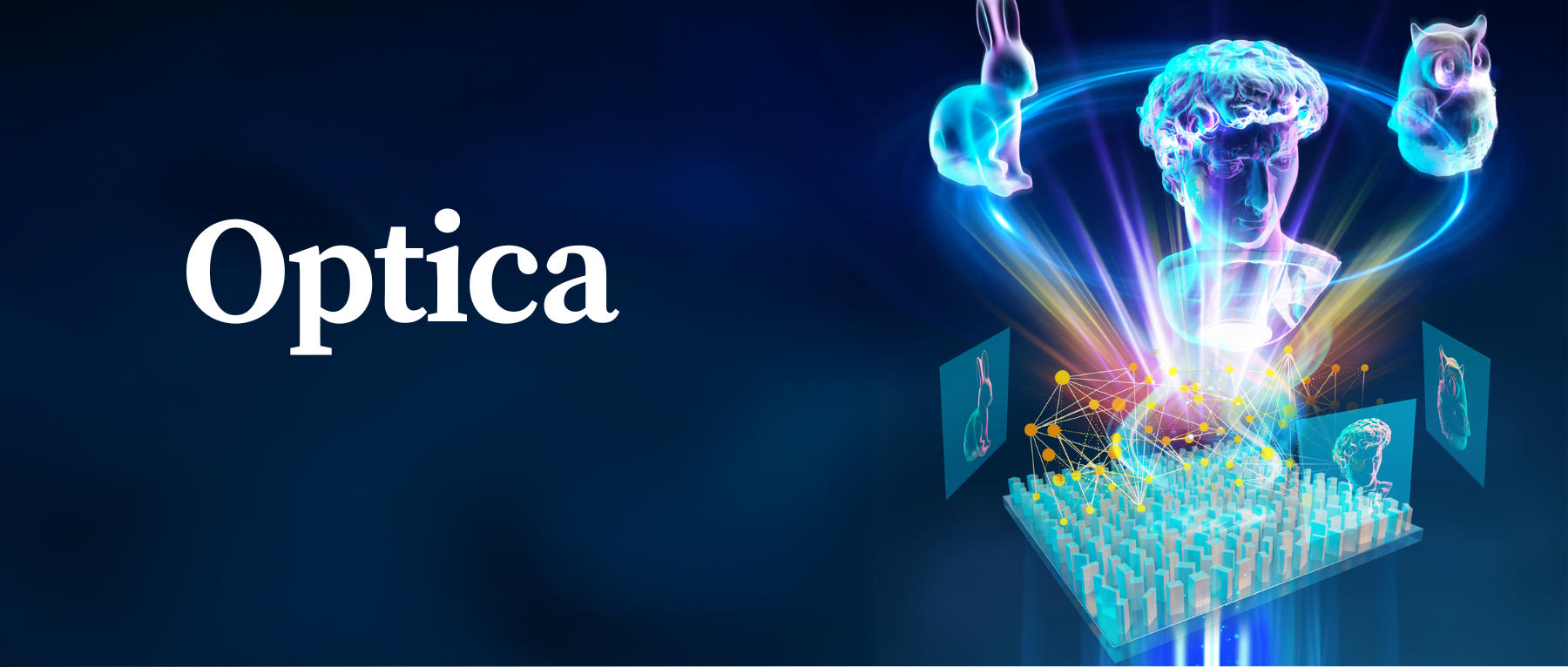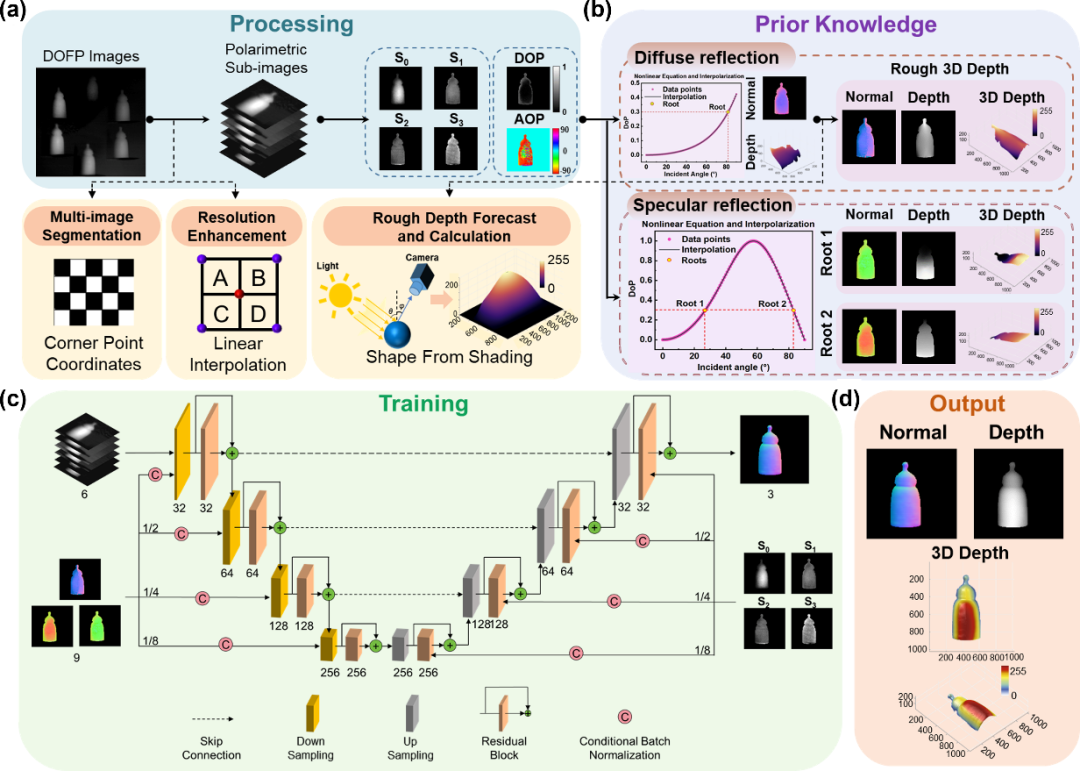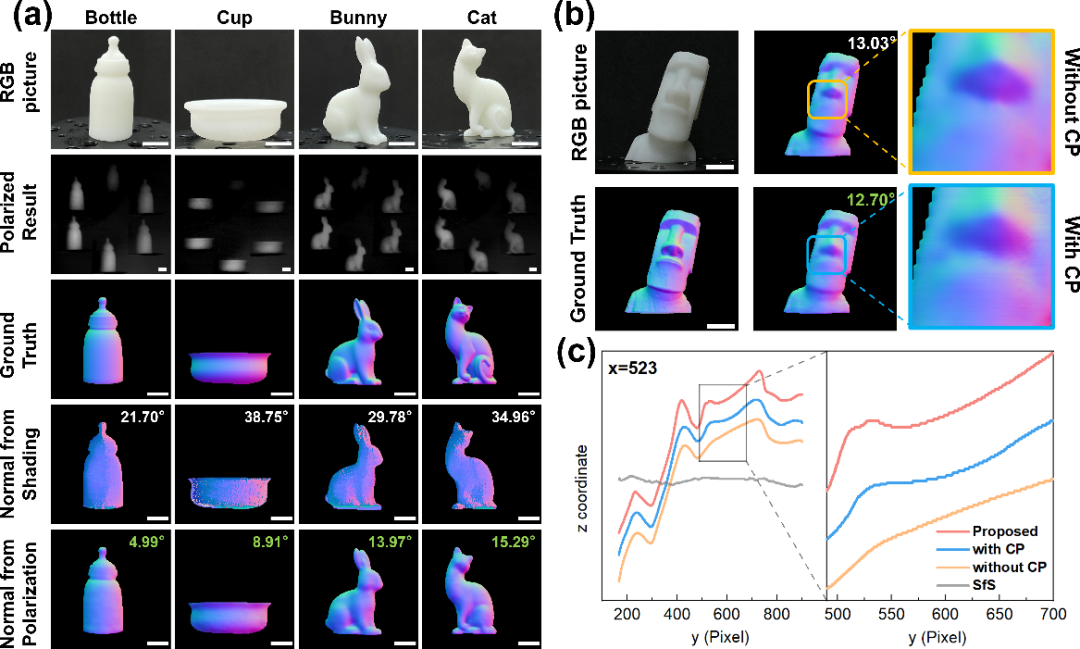11
2025
-
04
Nanjing University's Wang Shuming team Optica: High-definition passive stereo meta-lens imaging
Author:

Introduction
Accurately obtaining detailed three-dimensional information of objects has been a key challenge in scientific research and technological applications. When attempting to capture three-dimensional objects in two-dimensional images, a significant amount of three-dimensional detail is inevitably lost. While traditional Time-of-Flight (ToF) and structured light illumination techniques can reconstruct three-dimensional shapes to some extent, they require active illumination and are extremely sensitive to environmental conditions. In contrast, polarimetric stereo imaging can passively collect reflected light, avoiding the complex calculations of binocular disparity systems. However, traditional methods rely on multiple polarizers or multiple exposures to separate four linear polarizations, which limits real-time single-shot imaging.
Recently, the Shuming Wang team from Nanjing University proposed and demonstrated a miniaturized snapshot polarimetric stereoscopic imaging technology ( SPSIM ). This technology utilizes a polarization metasurface lens to decouple and focus full-Stokes polarized light. With the help of a neural network algorithm, it achieves high-resolution, real-time three-dimensional shape reconstruction. The polarization metasurface lens has an average extinction ratio of up to 25 dB (comparable to commercial polarizers), and a center wavelength efficiency of 65% (exceeding the 50% limit of commercial polarization cameras), making it possible to acquire full-Stokes parameters (FSPs). Assisted by the neural network algorithm, the system can generate a complete three-dimensional texture of the target object in just a few seconds. Notably, compared to traditional three-dimensional reconstruction systems that only use linear polarization, SPSIM significantly improves the accuracy of surface normal recovery by introducing orthogonal circular polarization, achieving depth accuracy within 0.15 mm. The relevant results are published in “ Miniaturized high-efficiency snapshot polarimetric stereoscopic imaging ” in Optica 。

Figure 1: Schematic diagram of miniaturized snapshot polarimetric stereoscopic imaging (Source: Optica )
The 3D reconstruction work of the SPSIM system starts with preprocessing to obtain unique values for zenith angle ϑ and azimuth angle ψ. Depth information is roughly recovered using the measured full-Stokes parameters (FSP), angle of polarization (AOP), and degree of polarization (DOP). To address the ambiguity of the azimuth angle ψ, we employed Shape from Shading (SFS) as a physical prior. A neural network was then introduced, training an enhanced U-Net network using the full-Stokes parameters (FSP) and prior information to achieve accurate surface normal recovery.

Figure 2: Flowchart of the polarization 3D reconstruction system (Source: Optica )
To evaluate network performance, researchers conducted qualitative and quantitative analyses of the reconstructed surface normal maps in the test set. Tests on objects such as bottles and cups revealed that under natural lighting, human eyes and standard cameras find it difficult to distinguish the details of resin materials, while the SFP method exhibits high sensitivity. Compared to traditional methods, the neural network-driven SFP significantly reduces reconstruction errors on smooth surfaces, with a significant improvement in accuracy. Simultaneously, tests confirmed that circular polarization (CP) is crucial for shape recovery; the information it provides can accurately capture subtle contour changes. The lack of CP results in large errors and a lack of detail in the normal map, indicating that incorporating CP in polarimetric stereo imaging is key to obtaining detailed object textures.

Figure 3: Surface normals of three-dimensional objects and accuracy improvement introduced by circular polarization (Source: Optica )
Using discrete integral surface normals effectively avoids the integrability problem. Experiments on different objects show that this method achieves excellent reconstruction results. It can not only accurately distinguish the depth of different parts of an object, such as clearly distinguishing the depth difference between a dog's legs and the background, but also excellently preserves the surface details of the object, vividly restoring the animal's facial expressions. When reconstructing the Moai statue, even a slight protrusion of only 0.15 mm on the mouth can be accurately recovered, with a reconstruction depth accuracy of less than 0.15 mm. The experiment also captures the object from multiple angles, and by fusing point cloud data, successfully recovers the complete 3D texture.

Figure 4: Three-dimensional depth results and all-angle depth recovery (Source: Optica )
Summary
Compared to traditional methods, the SPSIM system features ultra-compactness, high efficiency, and high resolution, enabling it to be easily integrated into portable devices and operate stably in extreme environments, injecting new vitality into the development of next-generation imaging systems. This research undoubtedly opens up new directions for the three-dimensional imaging field and is expected to be widely applied in various fields, promoting further innovation in related technologies.
Paper Information
Boyan Fu, Xuxi Zhou, Tianyue Li, Hao Zhu, Zhen Liu, Shiyu Zheng, Yifan Zhou, Yiwan Yu, Xun Cao, Shuming Wang, Zhenlin Wang, and Shining Zhu, "Miniaturized high-efficiency snapshot polarimetric stereoscopic imaging," Optica 12, 391-398 (2025)
LATEST NEWS
2025-07-12
Hyperspectral channel density on-chip diffractive speckle spectrometer
Driven by the demand for high-performance miniature spectrometers, research on chip-scale spectrometers is continuously breaking through towards high integration, high resolution, and large bandwidth. This work proposes a silicon-based on-chip spectrometer based on cascaded disordered metasurfaces. Through various on-chip wavefront modulation mechanisms, high-spectral speckle is generated, which expands the number of spectral channels with a compact chip size, thus achieving extremely high on-chip spectral channel density and providing an effective means for achieving high-resolution, large-bandwidth spectral detection.
2025-07-14
Ultrasensitive room-temperature extreme photoelectric response achieved
This study, for the first time, achieved the control of ultra-sensitive photoelectric response optimized for room temperature conditions through electromagnetically induced potential well effects and exciton insulator phase transition characteristics.
2025-07-15
Preparation and research progress of glass scintillators for X-ray imaging
Developing suitable host materials with strong X-ray absorption coefficient, good exciton transport efficiency, low phonon energy, and high lanthanide ion solubility remains a cutting-edge research direction in the field of X-ray detection.
2025-07-16
Quantum logic gates based on single-piece gradient metasurface
In today's rapidly developing quantum information technology, realizing efficient and highly integrated quantum logic gates is one of the key challenges in the field of integrated quantum optics.
2025-07-17
Preparation and performance study of epoxy-thiol high-contrast color polymer dispersed liquid crystals
Polymer Dispersed Liquid Crystal (PDLC) is a smart material consisting of micron-sized liquid crystal droplets dispersed in a polymer matrix.

